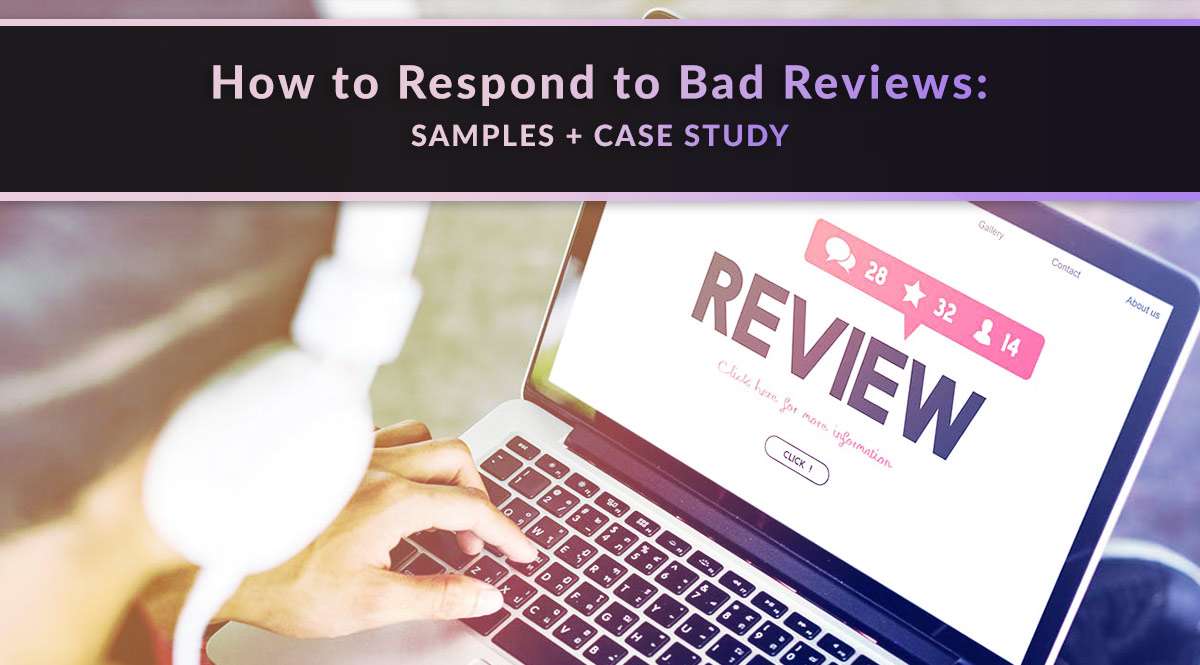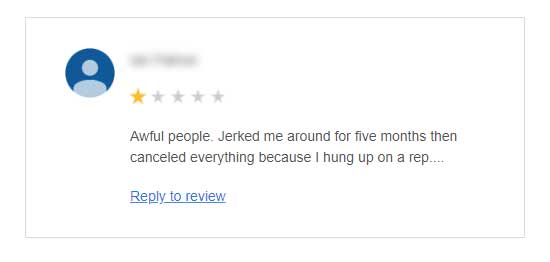
It happens to everyone – an upset customer leaves a scathing review, and you’re left wondering if there’s any way to undo the damage.
Bad reviews are an occupational hazard. Even if you strive to provide every client with the best possible service, it’s inevitable that human emotions occasionally get in the way. Maybe you weren’t at your best on that particular day. Ditto for the client. Whatever the reason, there is absolutely no way to guarantee a 100% positive review rate. Hollywood directors and best-selling authors have known this for decades.
No time to read? Watch our video overview:
So what’s the safest way to respond to bad reviews?
Unlike film directors or authors, we need to acknowledge our reviews. This is easiest when you have a “swipe file” of previous responses you can easily mix up and apply. As you respond to a review, paste the reply into your swipe file. If you’re super-organized, you may want to label or sort them by type: happy customer, angry customer, customer with a suggestion, confused customer, etc.
Here are two key best practices for your swipe file:
- Do not paste the same replies over and over. The swipe file is there to provide a rough draft and make it faster to reply. However, you still need to customize each response. You’re a human being, not a robot.
- Always proofread what you paste into your reply before submitting. Make sure you don’t have any fill-in-the-blank segments that remain unfilled or include a previous customer’s name.
Now, let’s go over a few strategies for how to respond to bad reviews. Then, we'll look at a real-life example where being proactive really paid off.
Strategy #1: Acknowledge and Offer a Solution
Best used for: a bad review where the case and/or relationship may not be salvageable
Your goal:
(1) Acknowledge their experience.
(2) Thank them for their time and feedback.
(3) Offer any resolution or next steps possible.
Sample response: Hi [client first name], I’m so sorry you didn’t have a good experience with [us / me / agent or employee name]. I appreciate you taking the time to leave us feedback – your input helps [me/us] get closer to reaching [my/our] goal of giving all my clients [prompt, friendly] service. I’d love the chance to make this right. If you reach out to me at [phone] or [email], I’ll [explain what you will do for them]. I hope to hear from you soon – and thanks again for the helpful feedback.
Strategy #2: Acknowledge and Contact
Best used for: a bad review where you know the case and/or relationship can be salvaged
Your goal:
(1) Acknowledge their experience.
(2) Thank them for their time and feedback.
(3) Take immediate action.
(4) Tell them what action you’ve taken to help.
(5) Invite them to follow through to fully resolve the situation.
Sample response: Hi [client first name], I’m so sorry you didn’t have a good experience with [us / me / agent or employee name]. I appreciate you taking the time to leave us feedback – your input helps [me/us] get closer to reaching [my/our] goal of giving all my clients [prompt, friendly] service.
After looking at your file, I see that I can [brief explanation of how you can help, with no HIPAA-protected info]. I went ahead and [action you took – most likely, email, texted, or left them a voicemail].
If you reach out to me at [phone] or [email], I’ll [explain how you can move things forward.] I hope to hear from you soon – and thanks again for your feedback.
Strategy #3: Acknowledge and Clarify
Best used for: a bad review where the client is unreasonable, rude, or incorrect
Your goal:
(1) Acknowledge their experience.
(2) Thank them for their time and feedback.
(3) Clarify the situation.
(4) Offer any resolution or next steps.
Sample response: Hi [client first name], I’m so sorry you didn’t have a good experience with [us / me / agent or employee name]. I appreciate you taking the time to leave us feedback – your input helps [me/us] get closer to reaching [my/our] goal of giving all my clients [prompt, friendly] service.
I do want to clarify one point, however. [clarify the point]
I would love the chance to make this right. If you reach out to me at [phone] or [email], I’ll [explain what you will do for them]. I hope to hear from you soon – and thanks again for the helpful feedback.
Case Study: Why Reaching Out Works
Now, let’s see how some of these tactics can play out in real life. Here’s an actual one-star review for a client whose website we manage.

This was the first one-star review this client had ever had. They wondered if maybe the reviewer had meant to leave this review for a competitor with a very similar name. They reached out to us to ask whether it was better to respond or leave it alone.
Our lead manager responded with this advice:
- Think of this as an opportunity to turn one of the competitor’s customers into your customer.
- Thank them for taking the time to leave a review. Tell them their comment is important to you.
- Tell them you cross-referenced their name against your customer log, and can’t find them.
- Let them know you understand their frustration with the situation.
- Politely suggest confusion between your company and the similarly named company. If they still feel they’re correct, let them know you deeply apologize for the circumstance. Tell them you'll do whatever it takes to make it right.
- Ask them to please call you directly and provide the best contact number.
Our client followed this advice.
The reviewer responded – by confirming the mistaken identity and deleting the bad review.
![Screenshot of a message from the reviewer - 'This is about the Google review that you responded to. I apologize for that, I was intending to leave a review for [client competitor name], not [client name]. I've deleted it.'](https://pinneyinsurance.com/uploads/images/2-reviewdeleted.jpg)
Next, our client followed up to offer help getting the coverage the reviewer had been looking for:

After reading this message, the reviewer provided his contact info. Our client forwarded this information to us, and we gave it straight to our team lead for concierge service, with a note to give him extra-special attention.
Our team lead got in touch, provided a quote, and submitted the reviewer's application a few days later! And that particular sale only came about because of teamwork - and the willingness to reach out to turn an angry customer into a happy client.
That’s our look at how to respond to bad reviews!
What’s your policy for replying to reviews? Have you been able to turn a client around? Tell us in the comments!
